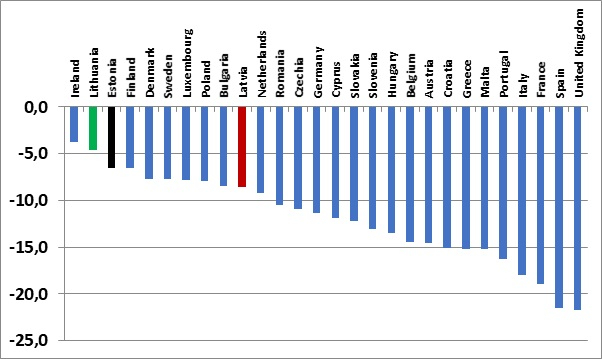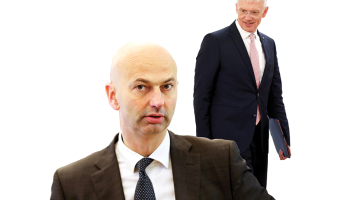
Ilustratīvs attēls no pixabay.com
Corona has taken its toll on the economy – big time – and while we may be crawling out from a hole and seeing some improvement again, we should feel blessed about being where we are. Many alternatives look a lot worse.
Here just a couple of graphs for the sake of comparison in the EU and to highlight how deep the current recession has been in some places.
Data from the second quarter of 2020 is available and it shows a grim picture. Obviously, GDP fell in all EU countries compared to the 2nd quarter of 2019 but at very different rates, see Figure 1.
Figure 1: Growth (decline…) of GDP in constant prices, 2nd quarter 2020 over 2nd quarter 2019.
Source: Eurostat and own calculations
Hardest hit were the southern European economies that rely heavily on tourism, as well as the United Kingdom. Corona and Brexit seem to be a particularly toxic cocktail.















